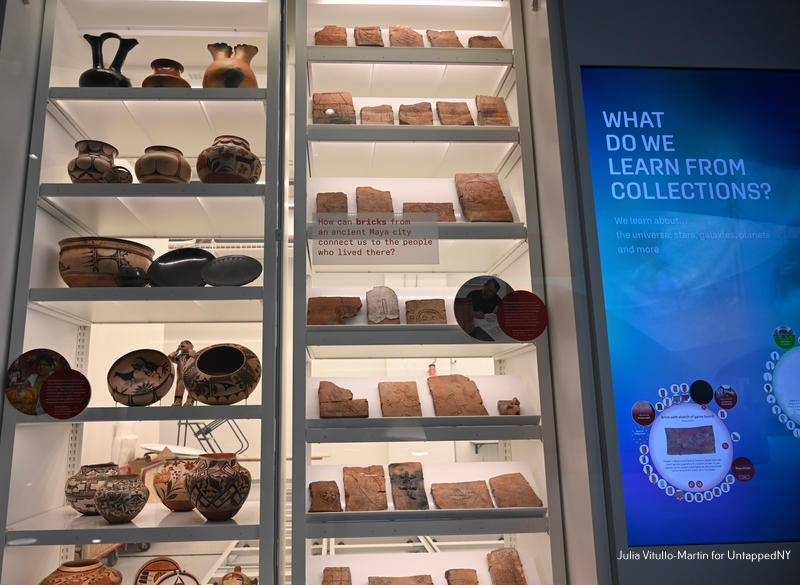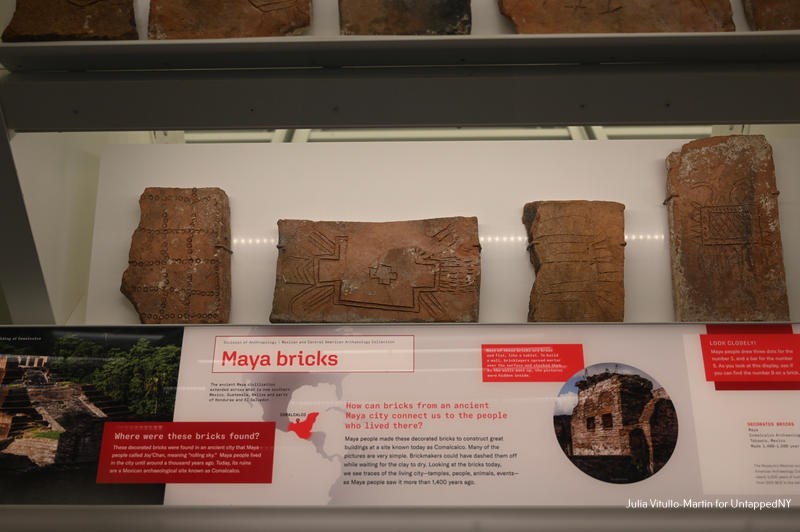5. Ancient Maya Bricks

At its core, the American Museum of Natural History is about its collections—some four million specimens—and their scientific study. Kimmelman notes our ancestral interest in “diverse collections of whatever were the biggest, smallest, rarest, most exquisite or baffling objects.” Scientists would categorize objects, looking for similarities and differences. The old days were a time of “global exploration, colonial conquest, humanist curiosity, and scientific advances. Wonderment was a desired middle state between delight and instruction,” writes Kimmelman, “proving God’s inscrutable ingenuity.” And from this came scientific progress that was based on removing objects from their home territories.
Today the museum carefully states that the objects in the Maya collection, gathered by AMNH anthropologist Gordon Ekholm, were all legally removed with permission from Mexico. Ekholm had shown parallels between advanced cultures in Asia and Maya civilization, suggesting that Mayan forebears had migrated across the Pacific. A similar expedition now would leave objects in place.

The Maya bricks are from Comalcalco, an ancient archaeological site in Mexico’s State of Tabasco, adjacent to the modern city of Comalcalco and near the southern coast of the Gulf of Mexico. The westernmost city of the Maya civilization, Comalcalco is celebrated for being the only major Maya city built with bricks rather than limestone masonry. The bricks on display were inscribed by their makers with various symbols and numbers. They used three dots for the number three, and a bar for the number five. Some scholars believe that the inscriptions are in some way prophetic.





